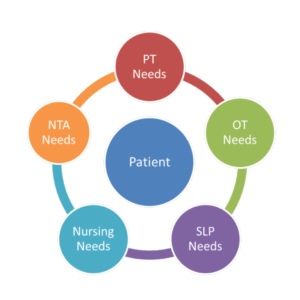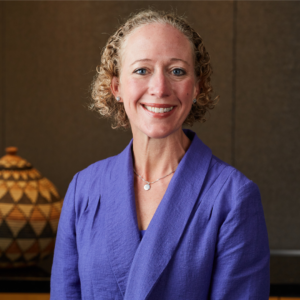CMS releases v1.13 of the RAI User’s Manual
On September 24, 2015, the Centers for Medicare & Medicaid Services (CMS) released the MDS 3.0 RAI User’s Manual v1.13, with changes effective October 1, 2015. This release includes the full manual, replacement pages and change tables for both. The change tables do not include corrections to minor formatting, punctuation or typographical errors as in past releases. As a general note, few of the changes in this update are substantive; most relate to clarity of phrasing, updated URLs, and punctuation. As expected, the biggest change in the manual concerns the new ICD-10 coding system for diagnosis, mostly affecting section I of the MDS. However, CMS also made a number of other clarifications throughout the manual where guidance may have been confusing in the past.
Newly certified nursing homes
CMS has clarified a few points concerning completion of the MDS when a facility is becoming newly certified. Chapter 2, page 2-4 of the RAI User’s Manual reminds us that the completion and submission of OBRA and/or PPS assessments is a requirement for all Medicare and/or Medicaid long-term care nursing homes. When a nursing facility is in the process of certification, OBRA and/or PPS assessments are still required, to demonstrate compliance with certification requirements. Since these assessments have assessment reference dates (ARDs) prior to the certification date, CMS does not have the authority to receive them into QIES ASAP, and so they should not be submitted to the QIES ASAP system.
Confusion about when to complete an Admission assessment around a new certification date has generated questions in the past. CMS clarifies in chapter 2, p. 2-4 of the manual that if facility staff complete an Admission assessment prior to the certification date, there is no need to do another Admission assessment after certification. Facility staff will simply continue with the next expected OBRA and/or PPS assessment—even though there may be a sequencing error on the validation report.
Lastly, CMS gives us the gentle reminder that Medicare cannot be billed for any care provided prior to the certification date. Therefore, facility staff must use the certification date as day one of the covered Part A stay when establishing the ARD for the Medicare Part A SNF PPS assessments.
Significant Change in Status and hospice
The subject of completing a Significant Change in Status Assessment (SCSA) MDS for residents enrolling in and/or discontinuing hospice has been touchy. It may be slightly more complicated, as CMS has made a small, but powerful, change in the language. Chapter 2, page 2-21 now reads, “A SCSA is required to be performed when a terminally ill resident enrolls in a hospice program (Medicare-certified or State-licensed hospice provider) or changes hospice providers and remains a resident at the nursing home.” If a resident elects hospice, a SCSA must be completed within 14 days of the hospice election date. However, if that same resident decides to change hospice providers, a new SCSA is required. This is to ensure that the plan of care is coordinated between the hospice and nursing facility.
Change of Therapy OMRA
The rules on when to complete a Change of Therapy (COT) OMRA are plentiful and can send even the most astute brain into a spin. CMS clarified some of the language in chapter 2, page 2-52. First, in cases where the last day of the Medicare Part A benefit (the date used to code A2400C on the MDS) is prior to day seven of the COT observation period, then no COT OMRA is required. In other words, the decision is made that the resident no longer meets the criteria for skilled services and the last covered day (A2400C) is prior to day seven.
Second, if the date listed in A2400C is on or after day seven of the COT observation period, then a COT OMRA is required if all other conditions are met. This might occur when a resident’s last day of Medicare is on day seven of the COT evaluation period and the resident continues care as a long-term resident. Third, CMS has given direction for cases where the date used to code A2400C is equal to the date used to code A2000—that is, where the discharge from Medicare Part A is the same day as the discharge from the nursing facility—and this date is on or prior to day seven of the COT observation period: in these cases, no COT OMRA is required. However, the COT OMRA may be combined with the Discharge assessment, if that is preferred.
Changes in Chapter 3
In section M, page M-5, the item M0210 Unhealed Pressure Ulcer(s) has been revised to further simplify coding decisions. It reads, “If a resident had a pressure ulcer that healed during the look-back period of the current assessment but there was no documented pressure ulcer on the prior assessment.” Since the language changed here, CMS deleted two coding tips in M0300A, for clarity. They were:
- If a resident had a pressure ulcer on the last assessment and it is now healed, complete Healed Pressure Ulcers item (M0900).
- If a pressure ulcer healed during the look-back period, and was not present on prior assessment, code 0.
These two coding tips no longer apply.
In a change to section A, page A-32 (A2400), CMS has replaced the words “Generic Notice” with “Notice of Medicare Non-Coverage (NOMNC),” referring to the first step in the Expedited Review Process.
In section I, CMS added guidance on page I-4 that says, “When a resident receives aftercare following a hospitalization, a V code is currently assigned in section I. Beginning October 1, 2015, aftercare codes will begin with a Z.” Keep in mind that when Z codes are used, another diagnosis for the related primary medical condition should be checked in items I0100–I7900 or entered in I8000.
While the changes to the RAI this year were not colossal, nursing facility leaders must continue to adhere to the rules ensuring accuracy. As with every change, communicating and teaching the new information to appropriate staff members remains a top priority; it is our responsibility to ensure that the MDS accurately reflects all residents and the care provided to them. Healthy interdisciplinary teams with qualified and informed professionals are a must for quality resident care.
Lisa Hohlbein, RN, RAC-MT, CDP, CADDCT, is a Curriculum Development Specialist for the American Association of Nurse Assessment Coordination.
I Advance Senior Care is the industry-leading source for practical, in-depth, business-building, and resident care information for owners, executives, administrators, and directors of nursing at assisted living communities, skilled nursing facilities, post-acute facilities, and continuing care retirement communities. The I Advance Senior Care editorial team and industry experts provide market analysis, strategic direction, policy commentary, clinical best-practices, business management, and technology breakthroughs.
I Advance Senior Care is part of the Institute for the Advancement of Senior Care and published by Plain-English Health Care.
Related Articles
Topics: Articles , MDS/RAI , Regulatory Compliance











